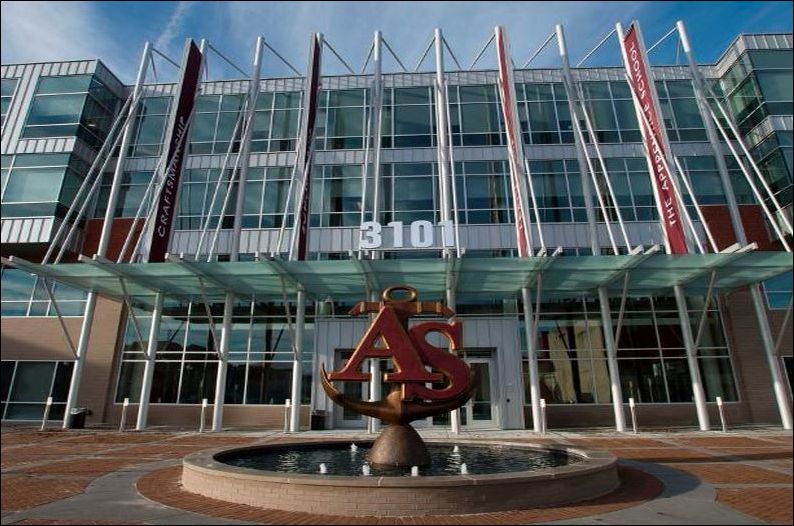by James A. Bacon
The Apprentice School in Newport News is arguably the most under-rated institution of post-secondary education in Virginia. It lacks some of the attributes that many colleges and universities take for granted — no NCAA-affiliated basketball teams, no frat parties and no dormitory high jinks. But consider this: If you’re lucky enough to attend — with a ratio of 230 spots for 4,000 applicants yearly, the school is more selective than Harvard — you get a free ride, graduate debt-free and are guaranteed employment with a major area company at a starting salary of $54,000 a year. That’s $10,000 more than the average college graduate earns.
The hitch? You don’t earn a Bachelor’s degree. Instead, you master one of 17 skilled trades — pipefitting, welding, electrical work — and you get on-the-job experience at Newport News Shipbuilding helping build atomic-powered submarines and aircraft carriers.
As American industries grapple with a shortage of workers in the skilled trades, sure to grow worse as skilled, blue-collar Baby Boomers retire, and as American students grow increasingly skeptical of the value of over-priced college degrees that no longer offer any surety of employment, institutions like the Apprentice School are looking better and better. As noted in a recent New York Times article profiling the school, political enthusiasm for apprenticeships transcends partisan and ideological lines. Writes the Times:
“We know this works,” said Thomas E. Perez, [the U.S. Secretary of Labor], describing how big companies have long trained young people in Germany, which has 40 apprentices for 1,000 workers, compared to about three per 1,000 in the United States. “It’s not hard to figure out why the Germans have a youth unemployment rate that is half what it is here.”
It’s hard to find anyone who objects to apprenticeships. The problem is that they can’t seem to get traction in the United States. Between 2007 and 2013, the number of active apprentices in the United States fell from about 451,000 to 2888,000, according to Labor Department data. That number increased for the first time since the recession, the Times reports, rising by 27,000.
One problem is that apprenticeships can be expensive to support. At the Apprentice School, the U.S. gold standard, they’re really expensive. The training costs $270,000 per apprentice. That’s beyond the reach of most companies. Another difficulty may be a cultural bias in the U.S. against “blue collar” occupations, which are seen as less prestigious, even though earnings are competitive with many professions requiring a college degree.
The Apprentice School addresses the prestige problem by collaborating with Thomas Nelson Community College and Old Dominion University to provide pathways for students to earn Associates and Bachelor’s degrees. That may help explain why a school that most of us have never heard of is so incredibly popular.
Bacon’s bottom line: Virginia is blessed to have what is arguably the top apprenticeship program in the United States. The school business model may not be readily replicated — not many enterprises have the scale of Newport News Shipbuilding. But the shipbuilding company and its corporate parent, Huntington Ingalls Industries, are public-spirited companies and, I’m confident, would be willing to advise others on what it takes to build a world-class program.
As a matter of public policy, Virginia gives enormous attention to its system of higher education, including a fine system of community colleges. But apprenticeships, as measured by budgetary commitment, fall between the cracks. The Virginia Department of Labor and Industry does support the Virginia Registered Apprenticeship system providing a search of apprenticeship opportunities with 2,000 participating Virginia employer-sponsors. That program supports two “apprenticeship consultants” in the Richmond office. And the state does provide a Virginia’s Worker Retraining Tax Credit. But that seems to be the sum total.
If the state is willing to support college students majoring in English, sociology and history (my degree, and look where it landed me!) to the tune of thousands of dollars per student per year, surely it should be willing to support apprenticeship programs as well.
(Hat tip: Reed Fawell.)



